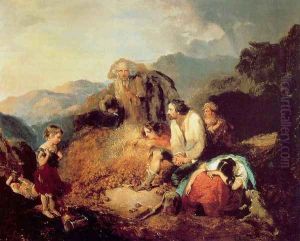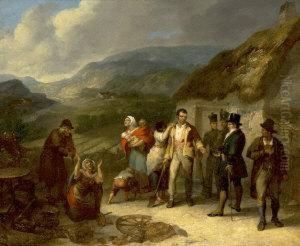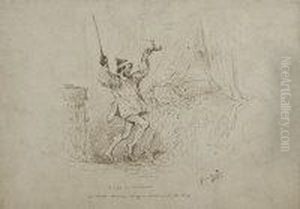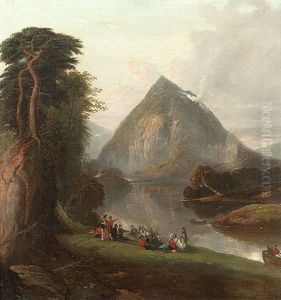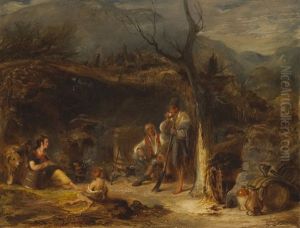Daniel MacDonald Paintings
Daniel MacDonald was an Irish artist who is notably one of the few Irish painters to have directly depicted the Great Famine in Ireland (1845–1849). Born in 1821 in Cork, MacDonald showed artistic promise at an early age. He was part of a family that was steeped in artistic talent; his brother James MacDonald was also a painter, and they both received their early artistic training in their native city.
As a young artist, Daniel MacDonald was influenced by the Cork School of painting, which was known for its genre scenes and landscapes. He later moved to London to further his career and became associated with the pre-Raphaelite movement, although he maintained his own distinctive style. His work often depicted Irish rural life, and he was one of the few artists of his time to focus on the plight of the Irish peasantry during the Famine.
MacDonald's most famous work is 'An Irish Peasant Family Discovering the Blight of their Store', which directly addresses the impact of the potato blight. This painting is significant as it is one of the few contemporary depictions of the Great Famine, a catastrophic event that led to the death of approximately one million people and the emigration of at least another million. His decision to illustrate this tragic event in Irish history was a bold move that set him apart from many of his contemporaries, who chose not to represent such controversial subjects.
Unfortunately, Daniel MacDonald's career was cut short when he died at the young age of 32 in 1853. His early death meant that his body of work was relatively small, but his contributions have been recognized posthumously, and his paintings are considered important records of Irish history and culture. They provide a poignant insight into the lives of the Irish during one of the most difficult periods in their history. MacDonald's art remains a testament to his talent and his commitment to portraying the social realities of his time.
